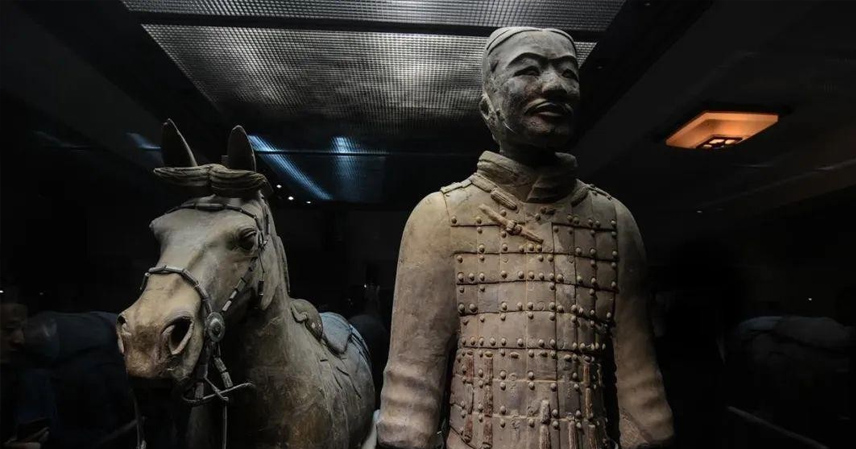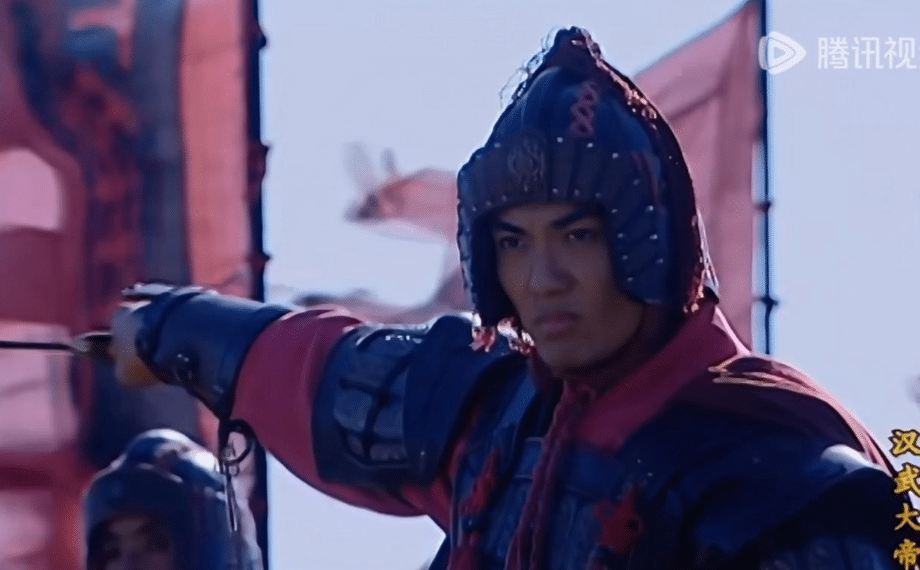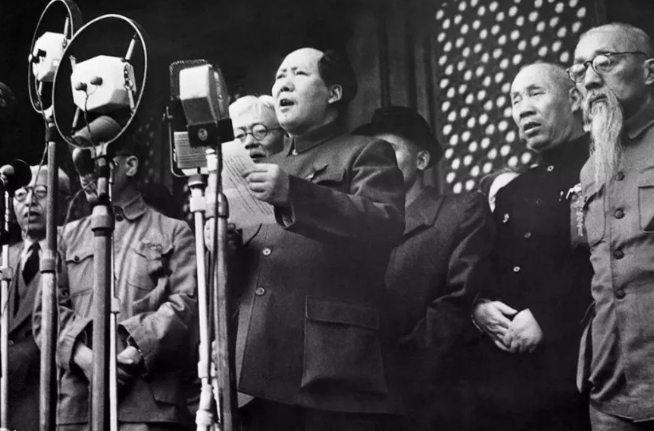A Chilling Legend
Among China’s most mysterious and awe-inspiring archaeological discoveries, the Terracotta Army stands unrivaled. Over 8,000 life-sized clay warriors stand in precise formation, each with distinct expressions and postures, showcasing the pinnacle of ancient sculptural artistry.
Yet for centuries, a chilling legend has persisted: these figures were not made of clay, but of living humans. According to folklore, Emperor Qin Shi Huang allegedly ordered thousands of soldiers to be encased in clay and fired in kilns to create the army — a macabre attempt to make his tomb “realistic.”
While shocking, the legend seemed plausible to some. Ancient China did practice human sacrifice for burials. Archaeologists have found human remains in Shang dynasty royal tombs, often war captives or slaves, interred alongside rulers. And historical records depict Qin Shi Huang as ruthless — burning books, burying scholars, and executing tens of thousands of surrendered soldiers.
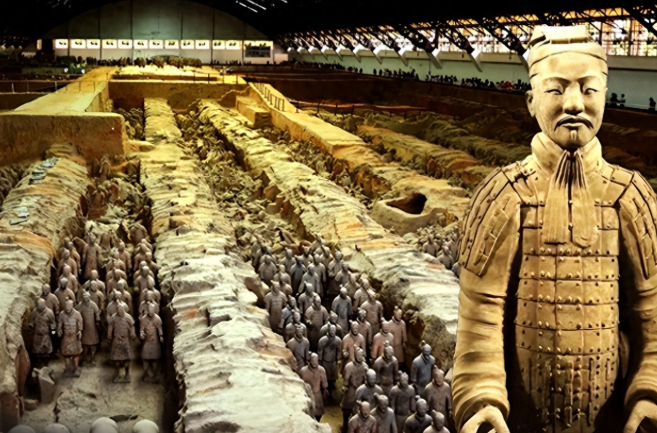
However, a closer look at the Terracotta Army reveals a different story.
The Discovery That Shattered Myths
In 1974, farmers digging a well near Xi Yang Village, Lintong, Shaanxi Province, unearthed a fragment of a clay head. Further excavation revealed entire bodies, arms, and even chariots — the legendary Terracotta Army finally came to light.
As archaeologists examined the figures, whispers of “human-shaped clay” resurfaced. But a crucial clue emerged: a subtle crack in one figure exposed its interior — and it was hollow. No organic material or human remains were present.

Subsequent testing using X-ray imaging and material analysis confirmed the truth:
- The soldiers were made of clay, not human bodies.
- They were hollow, meticulously constructed to reduce weight and prevent cracking.
- Heads, torsos, and limbs were separately molded and later assembled — a modular construction method.
The “live human sacrifice” tale, though gruesome, was unfounded. The army’s realism comes from artistic skill and innovative engineering, not horror.
Qin Shi Huang: A Reformist Emperor
Historically, Qin Shi Huang is often cast as a tyrant. Yet the Terracotta Army suggests a more rational and humane approach to burial practices.
After unifying China in 221 BCE, the emperor faced a dilemma: traditional royal burials involved human sacrifices. Sending trained soldiers or servants to die alongside the emperor would have been economically costly and morally questionable.
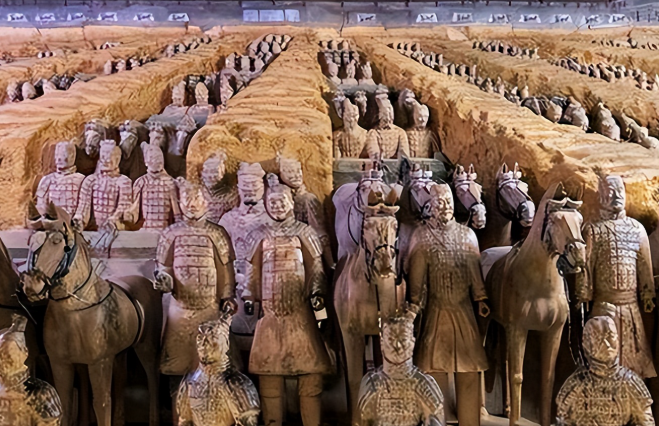
Instead, Qin Shi Huang commissioned artisans to create clay replicas of soldiers, officers, and even attendants, musicians, and cooks. Each figure was unique in hairstyle, clothing, expression, and posture, possibly modeled after real individuals.
This approach was revolutionary: it preserved the concept of a funerary army without sacrificing lives, reflecting both political foresight and ethical consideration.
At the time, much of Europe remained in the early Iron Age, yet Qin Shi Huang was implementing social and cultural reforms — moving burial practices from blood sacrifice toward a more civilized ritual.
Craftsmanship Behind the Clay
The Terracotta Army’s realism derives from advanced ceramic techniques:
- Firing temperatures exceeded 1,000°C, ensuring durability.
- Clay was molded in parts and carefully assembled.
- Details such as facial features, fingers, nails, and folds in clothing were meticulously sculpted.
Rather than “dark magic,” this was science and artistry in combination — a testament to the ingenuity of ancient craftsmen.

The Truth Is More Fascinating Than Legend
From the horrifying legend of “human-baked clay” to scientific analysis revealing hollow modular soldiers, the Terracotta Army demonstrates the intersection of art, technology, and ethical innovation.
Qin Shi Huang did not rely on human sacrifice. Instead, he created a permanent, self-sustaining army of clay, ensuring his continued symbolic control in the afterlife while protecting lives in the real world.
The 1974 discovery not only unearthed a pinnacle of ancient craftsmanship, but also revealed a nuanced historical figure, often misunderstood by history.
The next time you gaze into the eyes of a Terracotta Warrior, remember: you are not looking at a relic of horror, but at the ingenuity of artisans and the foresight of a reformist emperor. The truth is far more remarkable than legend.
References
- Qi, X. (2020). The Terracotta Army and Qin Dynasty Funerary Practices. Beijing: Cultural Heritage Press.
- Loewe, M. (2000). The Government of Qin Shi Huang. Cambridge University Press.
- Rawson, J. (1995). Chinese Bronzes: Art and Ritual. British Museum Press.
- Li, H. (2018). Archaeological Discoveries in Shaanxi: The Terracotta Army. Journal of Chinese Archaeology, 6(2), 45-68.
- Chen, Y. (2015). Technological Innovations in Qin Dynasty Ceramics. Asian Art Review, 12(4), 112-129.

